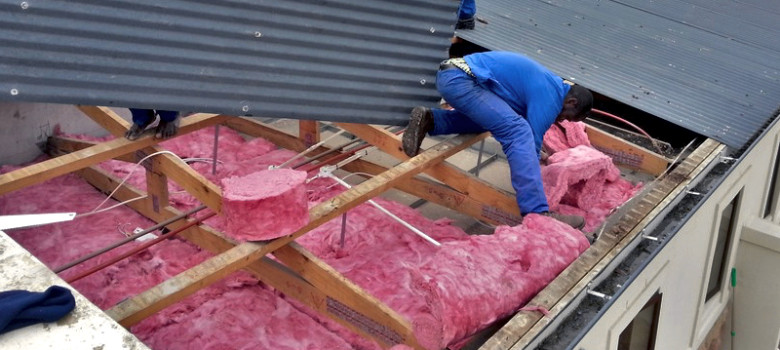
The UK currently has no available home energy ‘pay as you save schemes’, having cancelled its previous flagship program the Green Deal in July 2015. It was set up in 2013, following the 2011 Energy Act, to allow homeowners in the UK to improve their properties by installing energy efficiency measures such as insulation, efficient heating systems and renewables. The idea always being that this was would be a private sector lead initiative that would help stimulate the market to invest in energy efficiency, which in the previous years had always been driven by Government grants.
While the Government decides what to do next in terms of the make-up of a new scheme, there is no doubt that it will keep the private sector as the key driver for its success.
What is a home energy pay-as-you save scheme?
The aim of a pay as you save scheme is to increase the energy efficiency of private sector housing stock, make sure the consumer benefits from lower energy bills, increase the country’s energy security through lower demand for fossil fuels and reduce carbon levels to help the environment.
A pay as you save scheme in theory is about using private funding, predominantly through finance to fund the upfront cost of energy efficiency measures being installed. The principle is that a Government backed institution, a Government backed bank or a Government backed framework would allow lending to consumers at preferential interest rates that would reduce the barrier to entry for installing these energy efficiency improvements.

If you are private landlord, the theory is that a new and well-functioning energy efficient property can attract higher rental income, therefore paying back that investment over the course of the loan. To homeowners, studies have shown that ‘greening-up’ the property can lead to higher market values of those homes.
Lending has to be market competitive as Governments don’t want to contravene the European state aid rules by artificially setting an interest rate that is too low. So one might argue in Europe and the US, where we currently have record low interest rates, this is the perfect time for these types of schemes to kick-off.
Have pay-as-you-save-schemes shown successful footprints in the countries that have implemented them?
The countries that have adapted these schemes such as the US, UK and Germany have had different levels of success. The UK has had to scrap the Green Deal because of the “flaws” from the onset and is currently looking at a replacement model. Nevertheless in this article we will look at how these schemes were designed and comment on whether or not they have been successful.
Home Energy Pay-as-you-save-scheme in the UK
As mentioned the current Government backed pay-as-you-save energy efficiency for homes used to be the Green Deal until July 2015. It was available to owner occupiers and accessible to private rental accommodations. At the start of the process, the consumer had a Green Deal Energy Audit or Assessment, which lasted about 2 hours to determine which energy efficiency measures the property could benefit from.
On completion of the assessment the customer could have followed-up the next steps by arranging quotations for the works and access various pools of funding options including Green Deal Finance. The Green Deal main flaw was that it was underpinned by the ‘Golden Rule’, which meant lenders could only lend to the consumer a limited amount of finance determined by expected saving of the energy efficiency improvement measures. The reason this was a flaw of the scheme was that many properties simply didn’t exhibit enough “saving” on the report to free up the capital to pay for the improvement measure in the first place. Hence rather than being able to finance an improvement ‘with little or no upfront cost’ simply didn’t happen in practice.
If the customer choose to take-up the loan, they made those repayments plus the interest (currently fixed at 7%) back through the electricity bills.
The Green Deal Finance (pay-as-you-save element) was in addition supported by the Green Deal Home Improvement Fund (GDHIF cashback incentive) and the Energy Company Obligation (ECO) – essentially cashback and grants (former and latter) that were available as a ‘top-ups’, but also subject to certain criteria to fully access them.
At the end of August 2015, over 12,500 live Green Deal Finance plans had successfully gone through the system with the accompanying measures installed. However despite pending plans still going through the system, it is our understanding that the Green Deal Finance Company will not receive any more funding from the Department of Energy and Climate Change to process new applications.
Other models of home energy pay-as-you-save schemes
Pay-as-you-save programmes are not just here in the UK though, countries such as the United States, Germany and Australia all have Pay-as-you-save models, but they are all a little bit different to one other. We look at some of these different models in the sections that follow.
PACEnow – US Pay-as-you-save scheme
The PACEnow or the Property Assessed Clean Energy financing scheme offers domestic and commercial property owners the ability to take out low interest loans to fully pay for the energy efficiency improvement installations that make sense and are guaranteed to save money on bills. Currently available across 31 US states, following successful pilot launches across various cities.
Consumers, whether they are homes or businesses will have local Government backed energy assessment plans take place, and if the project makes economic sense, they can then speak to a PACE backed contractor to help get these measures be installed. The PACE approved contractor will also have access to the finance, which is backed by private investment and this will then be used to pay for the measures.
Once the measures are installed the local Government body will add the repayment plan onto the property tax bill, which would hopefully be net neutral to the consumer, whereby the energy saving would more than offset the additional tax paid.
Has the PACE scheme been a success?
According to PACENow (the non-profit body that promotes this framework), about $1billion of funding has been approved across the 31 states and other municipalities, with another $billion in the pipeline. The US State of California alone has completed about $500 million in residential PACE projects for approximately 25,000 homes in 2014. The commercial market has also funded about $100 million in completed projects, with another $400 million in the pipeline. This is now approximately $600 million in completed projects, which is considerably up from about $60 million in 2013.
KfW Efficiency House – German pay-as-you-save scheme
In Germany, the KfW backed energy efficiency scheme has been popular now for a number of years, bringing together low interest loans and public funding to fund various home energy efficiency retrofit programmes.
The KfW is a state owned bank that makes investment in housing development, urban projects and infrastructure, and with this programme, it is cooperating closely with the Federal Ministry for Building, Transport and Urban Development.
The customer initially expresses an interest to improve the energy efficiency of their property, by installing insulation, a new heating system or high efficiency glazing. An energy efficiency expert will then assess the property to check whether the measures being planned are viable and whether the levels of energy saving and CO2 reduction can actually be realised.
Once the measures have been discussed and approved, the customer can have a discussion with their local bank about taking out finance (up to €50,000) to fund these measures. The idea being that the local bank would lend the finance and this in turn would be fully underwritten by the KfW bank.
The energy saving measures then get installed and the customer benefits from a more energy efficient property. In addition the KfW backed programmed has different bands that represent ‘target levels’ for home CO2 reduction, and depending on the energy efficiency band attained, the customers could be inline for further rebates.
Other UK based pay-as-you-save schemes
A few years ago, the Energy Savings Trust administered a scheme in close cooperation with the Department for Energy & Climate Change (DECC) and the Department for Communities & Local Government (DCLG). They set up a pilot scheme that allowed up to £20,000 of zero interest funding for energy efficiency measures including double glazing, solar panels and external wall insulation.
The scheme was backed by other organisations like B&Q, British Gas and other local authorities such as Birmingham City Council and was extremely well received by participants that got on board. Some of the most popular installations taken-up were double glazed windows and solar PV panels. Customers in particular liked solar PV installs as they further benefited from the feed-in tariff income on top of all the energy saving that was realised.
Future of the UK home energy pay-as-you-save scheme
While the UK does not currently have a home energy pay-as-you-save scheme and that element alone has proven not to be comprehensive enough to encourage a large uptake in the market. So, although over 12,500 pay-as-you-save Green Deal Finance plans were approved by end of August 2015, DECC in actual fact expected to hit this number a year earlier (in 2014).
Consumer and industry bodies have slammed the complexity of the Green Deal, which has included negative feedback on how Green Deal Finance plans are approved through the system, software issues, and the shear volume of paperwork Providers have to go through just to get customers to sign-up. Media commentators have also criticised the ‘7% interest rate’, compared to the far lower interest rates that are widely available in the market today.
That being said, the launch of GDHIF, which worked in tandem with Green Deal Finance, led to a high uptake of actual plans from the levels previously experienced in 2014.
Expected improvements to the Green Deal
The whole energy efficiency framework is currently under review by DECC, and we don’t expect any major reforms until 2017. We don’t expect this go away but DECC have looked at trying to inject alternative funding to top-up Green Deal Finance, as an additional measure to improve the amount of capital available to the consumer to fund these improvements.

Other proposals that have been looked at that link energy efficiency improvements to council tax and other taxes like stamp duty, potentially reducing both if energy efficiency measures are taken-up.
There are also proposals on the table from the Labour party, that include using some of the money earmarked for energy efficiency schemes to subsidise the interest rates paid for energy efficiency loans, which all sound like they could improve any potential pay-as-you-save scheme.
The consensus was that the Green Deal was beginning to make a bit of an impact but it just did make enough headway with the public at large for large scale energy efficiency improvements. Any future scheme will need better design at the outset and long-term support to cement itself as a viable pay-as-you-save scheme for many years to come.
Think we missed something? Do you have a different opinion?
Comment below to get your voice heard…












“Other proposals that have been looked at that link energy efficiency improvements to council tax and other taxes like stamp duty, potentially reducing both if energy efficiency measures are taken-up.”
Now if THAT happened I would bump energy efficiency even higher up my list of priorities! Currently its on my “That would be nice to have” list….
On there at the moment is a smart thermostat, New french doors (PVC, my wooden ones are draughty), External wall insulation at the rear, New humidistat extractor for the bathroom, actually fit a kitchen extractor and a nuaire drimaster for the loft…. The first three of those may even come under the future funding!
Fingers crossed more effort is put into the new scheme….
For your readers’ benefit. Pay As You Save® and PAYS®, trademarked in the USA refers to the PAYS® system developed by the Energy Efficiency Institute, Inc. before the millennium. Our system was meant to create a risk free offer to consumers where they incurred no new debt (as with PACE), assurance they would not pay if upgrades failed during the duration of payments, and a number of other assurances that created an offer that was too good to refuse (including not having to pay off remaining payments if they relocate). EEI consulted with government staff in the UK and Canada, and both countries decided against adopting our system and seeking our advice our appropriated the name (in both cases without acknowledgment). Perhaps this has some relationship to the results the UK has achieved. In the USA, 17 utilities in 7 states have used the system. All utilities found that customers who turned down or were not eligible for loans accepted PAYS® offers. Utility uncollectables were less than for their other customers (less than 0.1%). Unlike PACE and other loan based programs, the programs based on our system have served renters, low to moderate income customers, the elderly, municipalities struggling to obtain voter approval to incur debt, commercial customers and regular folks. EEI has been working with others to expand the reach of our system. Interest by municipal, cooperative and investor owned utilities is peaking.
EEI would have been and would still be available to assist other countries to implement our system.
Good morning, I picked out this story from the FT over the weekend: https://www.ft.com/content/23888c90-db2d-11e6-86ac-f253db7791c6
Any ideas when it will go live and how it will work? I ask as I had one of my neighbours down the road have solar panels installed under the scheme, and we would like to do some refurbishments pretty quickly over the next few months.